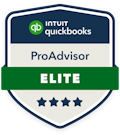Essential Estate Planning Documents
Estate planning is a critical part of preparing for the future. No matter your age or financial situation, having the right documents in place ensures that your wishes are honored, and your loved ones are cared for when you’re no longer around. At its core, an estate plan includes several key documents: wills, trusts, powers of attorney (POAs), and living wills. Let’s break down each of these essential components.
1. Will
A will is the foundation of any estate plan, providing clear instructions on how your assets should be distributed after your death. This document allows you to name beneficiaries—those who will inherit your property—and specify what each will receive. Without a will, state laws decide how your assets are divided, which may not align with your intentions. Beyond asset distribution, a will can name guardians for minor children and even provide for the care of pets.
While creating a will may seem straightforward, it's essential to consider what to include and exclude carefully. While a will dictates how most of your assets will be distributed, certain types of accounts—such as retirement accounts, life insurance policies, and annuities—are not governed by your will but by beneficiary designations. A beneficiary designation is a document, separate from your will, that names the individual who will receive a specific asset upon your passing. For example, when you purchase a life insurance policy, the insurance company will provide a form where you specify who should receive the proceeds of the policy in the event of your death. Similarly, retirement accounts like 401(k)s or IRAs also require beneficiary designations.
A well-drafted will prevents confusion, avoids potential disputes among heirs, and ensures that your wishes are carried out exactly as you envision.
2. Living Trust
A living trust, also known as a revocable trust, allows you to transfer assets like stocks, bonds, real estate, and other investments into the trust. This ensures those assets are distributed without the need for probate court, which can often be a lengthy and costly process. Beneficiaries receive assets directly, reducing both delays and legal expenses. A living trust is particularly useful for those who wish to maintain privacy, as the contents of the trust remain confidential (unlike wills, which become public records after death). In addition, this type of trust provides greater control over asset distribution, allowing you to specify when and how beneficiaries receive their inheritance, making it an excellent tool for managing wealth across generations.
3. Living Will
A living will, also known as an advance health care directive or medical directive (depending on the state), ensures that your healthcare preferences are followed if you’re unable to communicate or make decisions for yourself. This document addresses critical end-of-life decisions, such as whether you want life support, resuscitation, or specific medical interventions in case of incapacitation. Living wills provide peace of mind by ensuring your medical treatment aligns with your values and wishes. They also relieve family members of the burden of making difficult healthcare decisions during emotionally charged moments, as they can refer to your living will for guidance.
4. Power of Attorney (POA)
A power of attorney is a legal document that authorizes someone you trust—referred to as your agent or attorney-in-fact—to make decisions on your behalf if you become incapacitated. POAs typically fall into two categories: financial and healthcare.
- A financial POA grants your agent the authority to manage your finances, including paying bills, managing investments, and handling real estate transactions.
- A healthcare POA (also called a healthcare proxy) allows your agent to make medical decisions in line with your preferences if you're unable to do so.
Having both a financial and healthcare POA ensures that your affairs are managed efficiently during times when you can’t make decisions for yourself, preventing legal complications and giving you control over who acts on your behalf.
5. Digital Power of Attorney
In today's increasingly digital world, managing online assets is a critical yet often overlooked aspect of estate planning. A digital power of attorney allows you to appoint someone to handle your digital assets—everything from email accounts to online banking, digital photos, and even social media profiles.
Without a designated digital POA, managing or closing your online accounts can become a complex legal process for your loved ones. This document ensures that your digital presence is properly managed, whether that means safeguarding sensitive information or handling your accounts in accordance with your wishes.
Integrating Social Security Benefits into Your Estate Plan
Incorporating Social Security benefits into estate planning can help ensure financial stability for your loved ones. Social Security benefits can extend beyond the individual to family members, offering retirement, survivor, and spousal support. When a worker files for retirement benefits, their spouse may also be eligible for benefits based on the worker’s earnings. To qualify, the spouse must be at least 62 or caring for a qualifying child under 16 or with a disability. This spousal benefit may be up to half of the worker's "primary insurance amount." However, if the spouse begins receiving benefits before reaching "full retirement age," the benefit may be reduced—except if they’re caring for a qualifying child.
Social Security survivor benefits, such as those for minor children, can be essential for family members left behind. Generally, a child’s survivor benefits remain untaxed if their income is limited. If their income exceeds certain thresholds, a portion of the benefit may become taxable. For example, for single filers, if the child’s income plus half of their Social Security benefits exceeds $25,000, a portion may be taxed. The IRS provides further guidance in Publication 915, offering insight into taxable limits and scenarios.By anticipating these benefits and their potential tax implications, you can create a plan that minimizes tax burdens, maximizes support, and helps ensure your loved ones receive the resources they need.
Naming Beneficiaries
As mentioned, for specific assets, such as retirement accounts, life insurance policies, and certain investment accounts, naming beneficiaries is essential. These assets will pass directly to the named beneficiaries upon your death, bypassing probate. Naming beneficiaries ensures a smooth, efficient transfer of assets, sparing your loved ones from potential delays and legal expenses. It’s important to name contingent beneficiaries as well—those who will inherit if your primary beneficiary (often a spouse) predeceases you or passes away at the same time. Without a named beneficiary, assets could revert to your estate and go through probate, causing delays and possibly subjecting them to additional legal and administrative fees.
Review Your Estate Plan Regularly
Estate planning isn’t a one-time task. Life circumstances can change, and so should your estate plan. It’s essential to review your documents every three to five years—or after major life events like marriage, divorce, the birth of a child, or a significant financial change. Keeping your documents current ensures that your estate plan reflects your most recent wishes and protects against unintended consequences due to outdated information. For example, failing to update a will or beneficiary designations after a marriage or divorce can lead to assets going to the wrong person. Periodic reviews can help avoid such pitfalls.
Conclusion
Estate planning is about more than just protecting your assets; it’s about protecting your loved ones from unnecessary stress and financial burdens. No matter the size of your estate, taking the time to ensure you have a comprehensive plan in place is invaluable. From wills and trusts to POAs and living wills, these essential documents provide a roadmap for managing your affairs and honoring your wishes.
Regularly reviewing your estate plan and updating it to reflect changes in your life ensures that your legacy is preserved, and your loved ones are cared for in the way you intended. By having the right documents in place, you can bring clarity and peace of mind to an otherwise uncertain future.
- Debra Rodway's blog
- Log in to post comments



